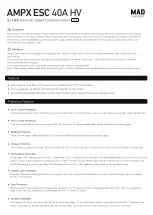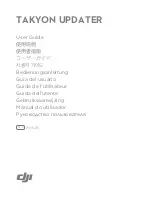
Commissioning
Memosens COS51E
24
Hauser
5. Wait for the polarization time to elapse .
7.3
Calibration and adjustment
During calibration, the measured value is compared to the value expected under specified
conditions (depending on the calibration method, e.g. in air with 100% rh at sea level).
A zero point calibration is not necessary. Perform a single-point calibration of the sensor
in the presence of oxygen.
A calibration must be performed after the following activities:
Cap change
A calibration is recommended after the following:
• Initial commissioning
• Replacement of membrane or electrolyte
• Cleaning of cathode
• Long pauses in operation without power supply
Calibration can also be monitored or renewed cyclically (at typical time intervals,
depending on operating experience), e.g. within the context of system monitoring..
Calibrate the sensor at least once a year.
Fully polarize the sensor prior to calibration.
7.3.1
Types of calibration
A slope or zero point calibration can be carried out for the sensor.
In most applications, single-point calibration in the presence of oxygen is sufficient
(=calibration of the sensor slope). When changing from process to calibration conditions, a
longer polarization time and an adjustment of the temperature to the environment must
be taken into account with the sensor.
The additional calibration of the zero point improves the accuracy of the measurement
results at trace concentrations. Zero point calibration, e.g. with nitrogen (min. 99.995%)
or COY8 zero-point gel. To prevent incorrect measurements in the trace range later on,
make sure that the sensor is polarized and the measured value has settled at the zero
point .
The following describes calibration of the slope in air (saturated with water vapor) as the
easiest and recommended calibration method. However, this type of calibration is possible
only if the air temperature is ≥ 0 °C (32 °F).
Before calibration, enter the air pressure/process pressure at the transmitter.
7.3.2
Calibration intervals
Specifying the intervals
If you want to calibrate the sensor intermittently for a special application and/or on
account of a special type of installation, you can calculate the intervals using the following
method:
1. Remove the sensor from the medium.
2. Clean the outside of the sensor with a damp cloth.
3. Then dry the sensor diaphragm carefully with a soft paper towel for example.
Содержание Memosens COS51E
Страница 2: ......
Страница 33: ...Memosens COS51E Maintenance Endress Hauser 33 6 Mount the sensor 37...
Страница 45: ...Memosens COS51E Technical data Endress Hauser 45 Membrane thickness COS51D 0 Approx 50 m COS51D 1 Approx 25 m...
Страница 47: ......
Страница 48: ...www addresses endress com 71556090 71556090...
















































